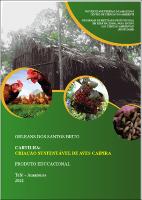| ???jsp.display-item.social.title??? |


|
Please use this identifier to cite or link to this item:
https://tede.ufam.edu.br/handle/tede/8382Full metadata record
| DC Field | Value | Language |
|---|---|---|
| dc.creator | Brito, Orleans dos Santos | - |
| dc.creator.Lattes | http://lattes.cnpq.br/8135857757249982 | eng |
| dc.contributor.advisor1 | Silva, Neliton Marques da | - |
| dc.contributor.advisor1Lattes | http://lattes.cnpq.br/2951411669963459 | eng |
| dc.contributor.advisor-co1 | Cavalcante, Katia Viana | - |
| dc.contributor.advisor-co1Lattes | http://lattes.cnpq.br/2715253110435470 | eng |
| dc.contributor.referee1 | Castro, Francisco Martins de Castro | - |
| dc.contributor.referee1Lattes | http://lattes.cnpq.br/2942899610434005 | eng |
| dc.contributor.referee2 | Schropfer, Edivania dos Santos | - |
| dc.contributor.referee2Lattes | http://lattes.cnpq.br/5186758587635323 | eng |
| dc.date.issued | 2021-05-12 | - |
| dc.identifier.citation | BRITO, Orleans dos Santos. Modelo didático pedagógico sobre a criação sustentável de aves caipira. 2021. 43 f. Dissertação (Mestrado em Rede Nacional para o Ensino das Ciências Ambientais) - Universidade Federal do Amazonas, Tefé-AM, 2021. | eng |
| dc.identifier.uri | https://tede.ufam.edu.br/handle/tede/8382 | - |
| dc.description.resumo | O objetivo do estudo foi desenvolver um modelo didático pedagógico para o ensino de ciências ambientais relacionados com avicultura para os discentes do curso técnico em agropecuária e produtores rurais. A pesquisa foi fundamentada na pesquisa ação, onde contou com a participação de 70 discentes, sendo 35 do sexo masculino e 35 do sexo feminino. Foram realizadas três oficinas onde foram abordados os aspectos construtivos do galinheiro, identificação de alternativos e a construção propriamente dita. O produto é uma cartilha que tem como título “Modelo didático para construção de um galinheiro sustentável para o ensino de ciências ambientais”. Para a avaliação do produto e aprendizagem dos docentes, foi elaborado um questionário semiestruturado baseado na escala Likert. Após o desenvolvimento das atividades, as informações foram analisadas de maneira qualitativa. Cerca de 57,53% concordam e 39,73% concordam totalmente que a utilização da cartilha promove a construção dos conhecimentos e habilidades demonstradas em sala de aula. 41,10% concordam totalmente e 56,16% concordam que a teoria repassada em aula é reforçada na construção do galinheiro. Em relação, a construção do galinheiro, foi questionado se o processo de sua construção facilita a assimilação de conceitos das ciências ambientais, cerca de 53,42% e 45,21% dos discentes concordam totalmente e concordam, respectivamente. Os resultados demonstram que a cartilha e as atividades de construção do galinheiro, apresentam fortes inclinações acerca dos aspectos de aprendizagem, conceitos teóricos e aplicação prática da proposta de uma educação ativa, em particular, voltada para o ensino de ciências ambientais. A utilização de modelo didático no ensino de ciências ambientais relacionado à avicultura caipira, constitui numa ferramenta estratégica para o alcance da aprendizagem e capacitação de discentes e técnicos. | eng |
| dc.description.abstract | The objective of the study was to develop a didactic pedagogical model for the teaching of environmental sciences related to poultry farming for the technical course in agriculture and rural producers. The research was based on action research, with the participation of 70 students, 35 male, and 35 female. Three offices were held in which the constructive aspects of the chicken coop were addressed, identification of alternatives, and the construction itself. The product is a booklet whose title is Didactic model for building a sustainable chicken coop for the teaching of environmental sciences, for product evaluation and teacher learning, a semi-structured questionnaire was prepared using the Likert scale. After the development of activities and data collection, the information was analyzed qualitatively. Around 57.53% agree and 39.73% totally agree that using the booklet promotes the construction of knowledge and skills demonstrated in the classroom. 41.10% totally agree and 56.16% agree that the theory passed on in class is reinforced in the construction of the chicken coop. Regarding the chicken coop construction, it was asked if the chicken coop construction facilitates the assimilation of concepts from environmental sciences, about 53.42% and 45.21% of the students totally agree and agree, respectively. From the findings of this study, it can be seen that the booklet and the construction activities of the chicken coop, present strong inclinations about the learning aspects, theoretical concepts and practical application of the proposal for an active education, in particular, focused on the teaching of environmental sciences. The use of a didactic model in the teaching of environmental sciences related to free-range poultry farming constitutes a strategic tool for the achievement of learning and training for students and technicians. Around 57.53% agree and 39.73% totally agree that using the booklet promotes the construction of knowledge and skills demonstrated in the classroom. 41.10% totally agree and 56.16% agree that the theory passed on in class is reinforced in the construction of the chicken coop. Regarding the chicken coop construction, it was asked if the chicken coop construction facilitates the assimilation of concepts from environmental sciences, about 53.42% and 45.21% of the students totally agree and agree, respectively. From the findings of this study, it can be seen that the booklet and the construction activities of the chicken coop, present strong inclinations about the learning aspects, theoretical concepts and practical application of the proposal for an active education, in particular, focused on the teaching of environmental sciences . The use of a didactic model in the teaching of environmental sciences related to free-range poultry farming constitutes a strategic tool for the achievement of learning and training for students and technicians. | eng |
| dc.format | application/pdf | * |
| dc.thumbnail.url | https://tede.ufam.edu.br/retrieve/47826/Disserta%c3%a7%c3%a3o_OrleansBrito_PROFCIAMB.pdf.jpg | * |
| dc.thumbnail.url | https://tede.ufam.edu.br/retrieve/47828/Produto%20final.pdf.jpg | * |
| dc.language | por | eng |
| dc.publisher | Universidade Federal do Amazonas | eng |
| dc.publisher.department | Centro de Ciências do Ambiente | eng |
| dc.publisher.country | Brasil | eng |
| dc.publisher.initials | UFAM | eng |
| dc.publisher.program | Rede Nacional para o Ensino das Ciências Ambientais | eng |
| dc.rights | Acesso Aberto | - |
| dc.rights.uri | http://creativecommons.org/licenses/by/4.0/ | - |
| dc.subject | Galinheiro sustentável | por |
| dc.subject | Modelo didático pedagógico | por |
| dc.subject | Produtores rurais | por |
| dc.subject | Agroecologia | por |
| dc.subject | Preservação ambiental | por |
| dc.subject.cnpq | OUTROS | eng |
| dc.title | Modelo didático pedagógico sobre a criação sustentável de aves caipira | eng |
| dc.type | Dissertação | eng |
| dc.contributor.advisor1orcid | https://orcid.org/0000-0002-6812-729X | eng |
| dc.creator.orcid | https://orcid.org/0000-0002-1595-5593 | eng |
| dc.contributor.referee2orcid | https://orcid.org/0000-0002-7698-1429 | eng |
| dc.subject.user | Ensino-Aprendizagem | por |
| dc.subject.user | Sustentabilidade | por |
| dc.subject.user | Avicultura | por |
| dc.subject.user | Ciências ambientais | por |
| Appears in Collections: | Mestrado Profissional em Rede Nacional para o Ensino das Ciências Ambientais | |
Files in This Item:
| File | Description | Size | Format | |
|---|---|---|---|---|
| Dissertação_OrleansBrito_PROFCIAMB.pdf | Dissertação_OrleansBrito_PROFCIAMB | 826.22 kB | Adobe PDF |  Download/Open Preview |
| Produto final.pdf | 4.03 MB | Adobe PDF |  Download/Open Preview |
This item is licensed under a Creative Commons License





